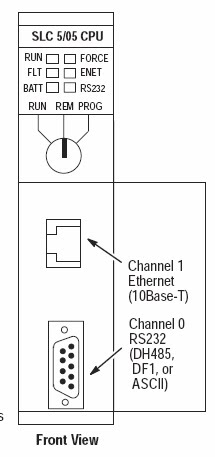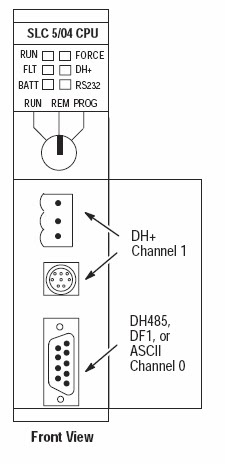The SLC 5/03, SLC 5/04, and SLC 5/05 processors include a 3-position Key Switch on the front panel that lets you select one of three modes of operation: Run, Program, and Remote. You can
remove the key in each of the three positions.Note : The SLC 5/01 and SLC 5/02 processors do not have a Key Switch. Therefore, all modes must be changed via the communication channels.


This position places the processor in the Run mode. The processor
scans/executes the ladder program, monitors input devices, energizes
output devices, and acts on enabled I/O forces. You can only change
the processor mode by changing the Key Switch position. You cannot
perform online program editing.
To change the processor mode to Run, toggle the Key Switch from
PROG or REM to RUN. When the Key Switch is left in the RUN
position, you cannot use a programmer/operator interface device to
change the processor mode.
PROG Position
This position places the processor in the Program mode. The
processor does not scan/execute the ladder program, and the
controller outputs are de-energized. You can perform online
program editing. You can only change the processor mode by
changing the Key Switch position.
To change the processor mode to Program, toggle the Key Switch
from REM or RUN to PROG. When the Key Switch is left in the
PROG position, you cannot use a programmer/operator interface
device to change the processor mode.
REM Position
This position places the processor in the Remote mode: either the
REMote Run, REMote Program, or REMote Test mode. You can
change the processor mode by changing the Key Switch position or by
changing the mode from a programmer/operator interface device.
You can perform online program editing in this position.
To change the processor mode to REM, toggle the Key Switch from
RUN or PROG to REM. When the Key Switch is in the REM position,
you can use a programmer/operator interface device to change the
processor mode.










